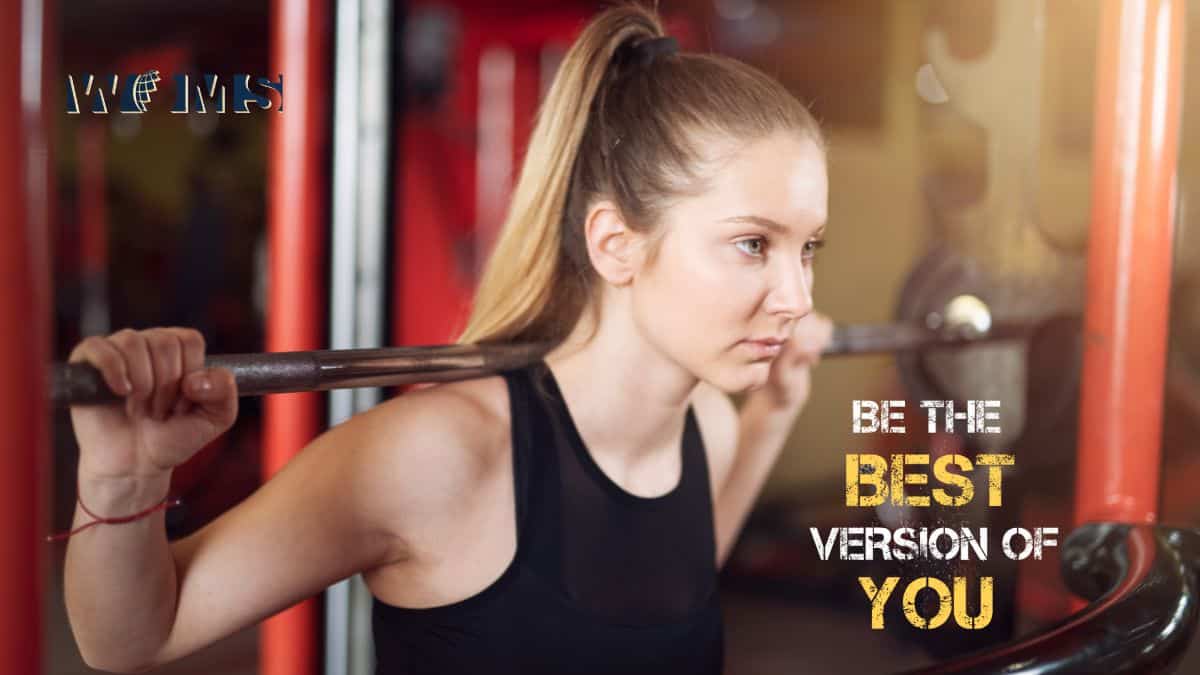How to Be the Best Version of Yourself in 7 Easy Practices

Do you ever feel you don’t know who you are or what you want from life? Do you struggle with finding your purpose, passion, or happiness?
If so, you are not alone. Many people feel lost, confused, or dissatisfied with themselves and their circumstances.
But it doesn’t have to be this way.
You can discover yourself and create a fulfilling and meaningful life by following simple practices to help you explore your inner world and connect with your true self.
Here are seven steps to finding yourself and living authentically.
1. Try New Things
Exploring new experiences and trying new things can profoundly impact your personal growth and development.
It opens doors to self-discovery, helping you uncover hidden talents and interests you may not have known existed.
Stepping outside of your comfort zone allows you to challenge yourself, overcome fears, and gain valuable insights about your strengths and capabilities.
Here are some different things you might try:
- Taking a class or course on something you’ve always wanted to learn (e.g., a language, an instrument, a sport, etc.).
- Exploring new hobbies and activities that interest you, such as cooking, painting, or even exploring tantric sex for beginners.
- Traveling to a place you’ve never been before (e.g., a country, a city, a park, etc.).
- Volunteering for a cause you care about (e.g., an animal shelter, a soup kitchen, a charity, etc.).
- Joining a club or group that shares your interests or hobbies (e.g., a book club, a hiking group, a chess club, etc.).
2. Practice Mindfulness
Mindfulness is a wonderful practice that allows us to truly engage with the present moment, fostering a sense of curiosity and openness.
Honing this skill, we can develop a heightened awareness of our thoughts, emotions, physical sensations, and the environment around us without passing judgment or becoming entangled in them.
The benefits of mindfulness are numerous. We can start recognizing our habitual patterns of thinking, feeling, and behaving, and gain a deeper understanding of how they impact our overall well-being.
It enables us to pinpoint our values, goals, and passions, and evaluate whether our actions are in alignment with them. It also helps foster a positive and compassionate attitude towards both ourselves and others.
You can try different techniques to practice mindfulness such as:
Meditation
This involves sitting quietly and focusing on your breath, a word, a mantra, or an object. You can use apps like Headspace or Calm to guide you through meditation sessions.
Mindful Breathing
Take slow and deep breaths, and notice how the air flows in and out of your body. You can do this anytime and anywhere, especially when you feel overwhelmed or feel the need to reduce stress.
Mindful Eating
While eating, pay attention to your food’s taste, texture, smell, and appearance, and savor each bite. Do this by eating slowly, chewing well, and avoiding distractions like TV or phone.
Mindful Walking
This is one of the best ways to practice mindfulness. Just walk comfortably around your neighborhood and notice your feet, legs, and body sensations. Also, observe the sights, sounds, smells, and feelings around you.
3. Journal Your Thoughts and Feelings
Journaling is the practice of writing down your thoughts and feelings regularly. It helps you express yourself, process your emotions, and gain insight into yourself and your life.
For example, journaling for weight loss can boost your self-esteem, improve your mood, and inspire you to make healthy choices. And, this record can be a source of motivation and encouragement when you review it later.
To journal effectively, try different methods like:
- Freewriting: This involves writing whatever comes to your mind without worrying about grammar, spelling, or structure. You can do this for a set time (e.g., 10 minutes) or until you fill a page.
- Prompted writing: Write in response to a specific question or topic that sparks your interest or curiosity. For example, you can use prompts like “What are you grateful for today?” or “What are you most proud of this week?” or “What are you looking forward to tomorrow?”
- Bullet journaling: It’s a common way to use symbols, lists, charts, and diagrams to organize your thoughts and tasks. You can use bullet journaling to track your life changing habits, plan your goals, record your mood, and more.
4. Take a Personality Test
Personality tests can help you understand yourself better. You can learn how you think, feel, behave in different situations, and relate to others.
You can learn how your personality type affects your choices and outcomes in life. You can also find out your strengths and weaknesses and how to make the most of them or improve them.
Most important, you can learn to accept and celebrate your uniqueness and diversity.
To take a personality test, you can try different assessments such as:
StrengthsFinder
This measures your top five talents out of 34 themes (e.g., Achiever, Learner, Harmony, etc.). It helps you discover what you do best and how to use your strengths to achieve your goals.
Enneagram
This measures your dominant personality type out of nine types (e.g., Type 1: The Reformer, Type 2: The Helper, Type 3: The Achiever, etc.).
It helps you understand your core motivations, fears, desires, and how to grow.
5. Ask for Feedback
Asking for feedback is a valuable practice for obtaining constructive criticism and advice from others. The feedback you receive can be invaluable in helping you improve your performance, behavior, and relationships with others.
It is important to approach feedback with an open and receptive mindset and to use the information gained as an opportunity to grow and improve.
Here are some tips to ask for feedback effectively:
- Choosing the right person to ask for feedback (e.g., someone who knows you well, who is honest and respectful, who has relevant expertise or experience, etc.).
- Asking specific and open-ended questions (e.g., “What do you think I did well in this project?” or “How can I improve my presentation skills?” or “How do you feel about our relationship?”).
- Listening actively and attentively, without interrupting or defending yourself.
- Expressing your appreciation and gratitude for the feedback, and taking action on it.
6. Set Goals and Take Action
Goals are what you want to achieve and how you plan to do it. Action is how you execute your plan and move toward your goals.
This practice can help you discover new things about yourself, clarify your vision for life, and improve self-discipline, motivation, and efficacy.
It can also help you overcome challenges, learn from failures, and create positive change in your life and in the world.
Some possible strategies to help you achieve your goals and act on them are:
- Setting SMART goals: Specific, Measurable, Achievable, Relevant, and Time-bound (e.g., “I want to lose 10 pounds in 3 months by exercising 3 times a week and eating healthy”).
- Breaking down your goals into smaller and manageable steps (e.g., “I will exercise for 30 minutes on Monday, Wednesday, and Friday” or “I will eat a salad for lunch every day”).
- Tracking your progress and results using tools like a calendar, a journal, or an app (e.g., “I lost 2 pounds this week” or “I exercised for 90 minutes this week”).
- Rewarding yourself for achieving your milestones and goals (e.g., “I will treat myself to a movie night after losing 5 pounds” or “I will buy myself a new outfit after exercising for a month”).
7. Seek Professional Help
Sometimes, instead of trying to do everything yourself, reaching out to a qualified expert to help with personal or professional issues, promoting personal growth, improved well-being, and goal achievement is better.
Seeking professional help helps you identify and address issues’ root causes, heal past traumas and patterns, and develop new coping skills and strategies.
You can seek out a therapist, a coach, or a mentor, depending on what’s going on in your life.
Therapy involves working with a licensed mental health professional who can provide you with psychological assessment, diagnosis, treatments, therapies, and support.
You can choose therapies like cognitive-behavioral therapy (CBT), psychodynamic therapy, humanistic therapy, etc.
Coaching is working with a trained professional to help with goal-setting and accountability. It can be psychosocial recovery coaching, life coaching, career coaching, or even executive coaching.
An experienced mentor can offer guidance, advice, feedback, and encouragement. You can choose from different types of mentoring, such as peer mentoring, professional mentoring, personal mentoring, etc.
Conclusion
Finding yourself is not a one-time event, but a lifelong journey. It is a process of self-exploration, self-expression, and self-improvement. It is also a process of self-acceptance, self-love, and self-respect.
By practicing the things we mentioned in this post, you can start your journey of finding yourself and living authentically. You can also enjoy the benefits of being yourself, such as:
- Having a clear sense of identity and direction
- Feeling confident and comfortable in your skin
- Being able to express yourself freely and creatively
- Having meaningful and fulfilling relationships
- Living a happy and purposeful life
So, what are you waiting for? Start finding yourself today and see how your life changes for the better!




